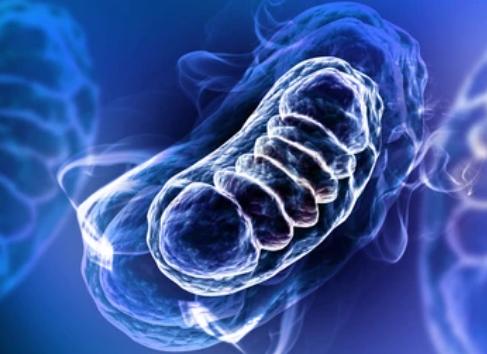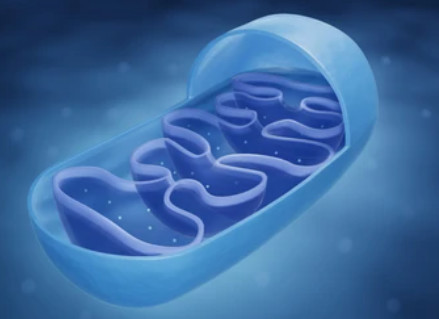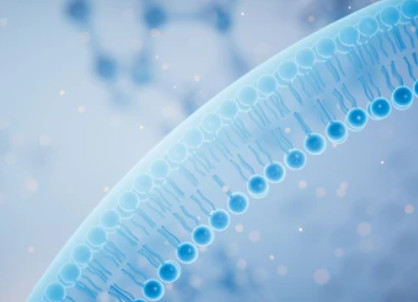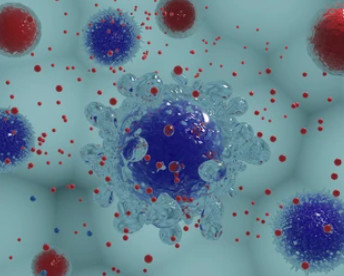Mitochondria and Metabolism
Online InquiryMitochondria are the primary site of energy production through aerobic respiration and are intricately linked to metabolism in living organisms. This energy, in the form of ATP, is essential for all metabolic processes in life such as growth, repair and maintenance of cells and tissues. Understanding this relationship is critical to understanding how cells and organisms function at the biochemical level.

Mitochondria's Role in Glucose Metabolism and Fatty Acid Oxidation
Mitochondria, the dynamic double-membraned organelles, exhibit a captivating duality in their roles, orchestrating both glucose metabolism and fatty acid oxidation with remarkable precision and efficiency.
Glucose Metabolism: From Glycolysis to the TCA Cycle
Mitochondria emerge as pivotal players in the intricate ballet of glucose metabolism, orchestrating a symphony of enzymatic reactions that transform glucose into energy-rich ATP. The journey begins with glycolysis, the cytoplasmic breakdown of glucose into pyruvate. Subsequently, the pyruvate is transported into the mitochondrial matrix, where it undergoes oxidative decarboxylation and enters the tricarboxylic acid (TCA) cycle, a complex web of reactions that culminate in the generation of high-energy electron carriers, NADH and FADH2.
The critical role of the mitochondrial electron transport chain (ETC) in this process. As electrons flow through the ETC, a proton gradient is established across the inner mitochondrial membrane, creating a potent electrochemical potential that drives the synthesis of ATP via ATP synthase. This remarkable coupling of electron transport and ATP synthesis highlights mitochondria's prowess in converting glucose-derived substrates into cellular energy.
Fatty Acid Oxidation: A Choreographed Dance
In parallel with glucose metabolism, mitochondria are instrumental in orchestrating the oxidative breakdown of fatty acids, a process known as β-oxidation. Through a sequence of enzymatic steps, long-chain fatty acids are cleaved into acetyl-CoA units, which enter the TCA cycle for subsequent ATP generation. Creative Proteomics' meticulous investigations have unraveled the intricate coordination between mitochondrial β-oxidation and other metabolic pathways.
Mitochondrial fatty acid transporters, located in the outer and inner mitochondrial membranes, facilitate the entry of fatty acids into the matrix. Our analyses reveal the exquisite regulatory mechanisms that govern this process, ensuring a balanced utilization of fatty acids as an energy source while preventing potential lipotoxicity.
Crossroads of Metabolism: Integration and Regulation
The convergence of glucose metabolism and fatty acid oxidation within mitochondria underscores their role as metabolic crossroads. Creative Proteomics' research has uncovered the dynamic interplay between these pathways, revealing a fine-tuned regulatory network that adapts to cellular energy demands.
Mitochondrial metabolism is regulated by a complex interplay of signaling pathways, including AMP-activated protein kinase (AMPK) and peroxisome proliferator-activated receptor gamma coactivator 1-alpha (PGC-1α). These master regulators sense shifts in cellular energy status and orchestrate a cascade of events that enhance mitochondrial biogenesis, oxidative capacity, and adaptive responses to metabolic stress. Our analyses emphasize the integral role of mitochondria in maintaining energy homeostasis and their ability to fine-tune metabolic processes to meet the cell's immediate and long-term energy requirements.
Mitochondrial Regulation of Metabolic Processes for Cellular Energy Demand
Mitochondria, the dynamic and intricately structured organelles within eukaryotic cells, play a fundamental role in regulating metabolic processes to fulfill the energy requirements of cells. The orchestration of these processes involves a complex interplay of biochemical reactions and cellular signaling pathways, ensuring a constant supply of adenosine triphosphate (ATP).
Oxidative Phosphorylation: The Core Energy-Generating Pathway
At the heart of mitochondrial energy production lies oxidative phosphorylation, an intricate biochemical process that takes place within the inner mitochondrial membrane. This pathway involves a series of protein complexes collectively referred to as the electron transport chain (ETC) and the enzyme ATP synthase.
- Electron Transport Chain (ETC): Within the inner mitochondrial membrane, the ETC consists of a series of protein complexes (I to IV) that shuttle electrons derived from electron donors, such as NADH and FADH2, through a series of redox reactions. These electrons flow downhill in energy, driving protons (H+) across the inner mitochondrial membrane and establishing an electrochemical gradient.
- Proton Gradient Formation: As electrons move through the ETC, they actively pump protons across the inner mitochondrial membrane, creating a proton gradient. This gradient serves as a potential energy source.
- ATP Synthase and ATP Generation: The electrochemical gradient established by the ETC is harnessed by ATP synthase, an enzyme complex embedded in the inner mitochondrial membrane. ATP synthase couples the movement of protons down their electrochemical gradient with the synthesis of ATP from adenosine diphosphate (ADP) and inorganic phosphate (Pi). This process, known as chemiosmotic coupling, leads to the generation of ATP.
Metabolic Flexibility: Adapting to Cellular Needs
Mitochondria exhibit remarkable metabolic flexibility, enabling cells to switch between different energy substrates based on cellular demands and nutrient availability. This adaptability is crucial for maintaining cellular energy homeostasis and ensuring optimal functioning.
- Glucose Metabolism: In well-fed states, mitochondria play a central role in glycolysis, the initial breakdown of glucose to produce energy. Pyruvate, a product of glycolysis, enters the mitochondria and undergoes oxidative decarboxylation to form acetyl-CoA, which then enters the tricarboxylic acid (TCA) cycle for further energy extraction.
- Fatty Acid Oxidation: During periods of fasting or increased energy demand, mitochondria shift their focus to fatty acid oxidation. Fatty acids are broken down in a process called beta-oxidation, generating acetyl-CoA for entry into the TCA cycle. This shift allows cells to tap into stored fat reserves for energy production.
- Amino Acid Utilization: Amino acids can also contribute to mitochondrial energy production. Through various metabolic pathways, amino acids can be converted into intermediates that enter the TCA cycle, further diversifying the energy sources mitochondria can utilize.
Regulation and Integration of Metabolic Pathways
Mitochondrial regulation of metabolic processes is tightly controlled to match cellular energy demands and prevent energy wastage. Key regulatory mechanisms include:
- Allosteric Regulation: Enzymes within mitochondrial metabolic pathways are subject to allosteric regulation, where specific molecules bind to regulatory sites and modulate enzyme activity. For instance, high levels of ATP can inhibit enzymes involved in ATP synthesis, ensuring energy production is adjusted according to cellular needs.
- Feedback Inhibition: Metabolic intermediates can act as feedback inhibitors, slowing down the activity of specific enzymes when their end products accumulate. This mechanism prevents excessive metabolite buildup and maintains metabolic flux.
- Cellular Signaling: Mitochondria communicate with the rest of the cell through intricate signaling networks. AMP-activated protein kinase (AMPK) and sirtuins are key regulators that sense cellular energy status and modulate mitochondrial function accordingly.

Mitochondrial Influence on Weight and Metabolic Health
Mitochondria are highly regarded for their role in energy production, and their influence extends beyond cellular viability to significantly impact body weight and metabolic health. A myriad of complex mechanisms link mitochondrial function to overall metabolic homeostasis, thereby influencing the risk of obesity, insulin resistance, and metabolic disorders.
Obesity and Mitochondrial Dysfunction
The relationship between mitochondrial function and obesity is multifaceted, involving both causal and consequential factors. Impaired mitochondrial function may contribute to the development of obesity, and obesity in turn exacerbates mitochondrial dysfunction.
- Role of mitochondria in adipose tissue: Dysfunctional mitochondria in adipocytes impair lipid oxidation, leading to lipid accumulation and adipocyte hypertrophy. In addition, mitochondrial oxidative stress triggered by excessive nutrient intake may lead to inflammation, insulin resistance and metabolic disorders.
- Energy imbalance and obesity: Mitochondrial dysfunction disrupts the fine-tuned balance between energy intake and expenditure. Reduced efficiency of oxidative phosphorylation decreases ATP production, which promotes compensatory responses favoring energy storage, often leading to weight gain. In addition, impaired mitochondria are unable to efficiently utilize fatty acids for fuel, promoting fatty acid accumulation in tissues and contributing to obesity.
Metabolic Health
Mitochondria are intricately intertwined with metabolic health, affecting insulin sensitivity, glucose homeostasis, and lipid metabolism.
- Insulin sensitivity: Mitochondrial dysfunction disrupts insulin signaling pathways and induces insulin resistance. In skeletal muscle, impaired mitochondrial oxidative capacity reduces glucose uptake, leading to elevated blood glucose levels.
- Glucose homeostasis: Mitochondria play a key role in maintaining glucose homeostasis. Hepatic mitochondria contribute to glucose production during fasting through gluconeogenesis. Conversely, in insulin-sensitive tissues such as muscle, they promote glucose utilization. Dysfunctional mitochondria disrupt this delicate balance and may lead to dysregulated glucose metabolism.
- Lipid metabolism: Mitochondria coordinate lipid metabolism, affecting the synthesis, breakdown, and storage of triglycerides.
Therapeutic Implications and Future Directions
Understanding the complex relationship between mitochondrial function and metabolic health holds promise for innovative therapeutic strategies. The elucidation of mitochondrial dynamics and interactions by Creative Proteomics contributes to this evolving landscape.
- Targeted interventions: mitochondria-targeted therapies aimed at restoring mitochondrial function hold promise for alleviating obesity-related metabolic disorders.
- Nutritional interventions: Emerging research emphasizes the impact of nutrition on mitochondrial function. Nutritional strategies that support mitochondrial biosynthesis and function have the potential to prevent or ameliorate metabolic disorders.
- Precision medicine: personalized approaches that take into account mitochondrial heterogeneity and genetic variation are key to optimizing metabolic health.
Creative Proteomics offer comprehensive mitochondrial research services including mitochondrial proteomics, mitochondrial lipidomics, mitochondrial functional analysis, mitochondrial damage detection, and mitochondrial autophagy, among others.
Related Services
* For Research Use Only. Not for use in diagnostic procedures.








